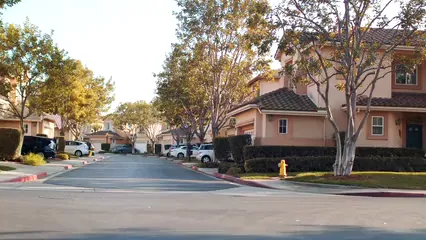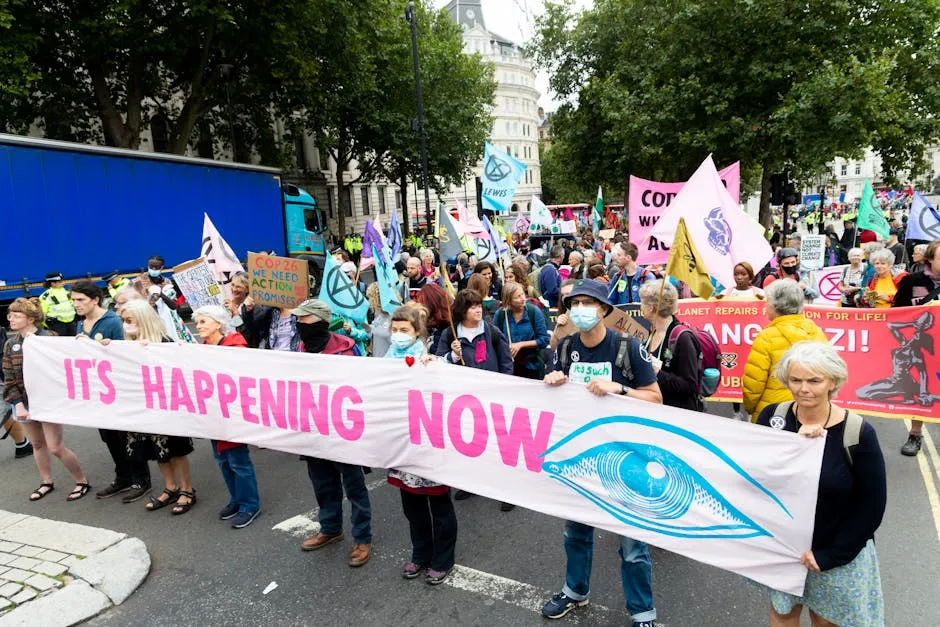Introduction
Anchorage, Alaska, is a city that brings together breathtaking wilderness and urban living. Nestled between the stunning Chugach Mountains and the sparkling waters of Kachemak Bay, it offers a rich blend of adventure and culture. The city is not just about picturesque views; it’s a hub of vibrant communities, delicious cuisine, and diverse wildlife.
However, like any city, Anchorage faces its share of challenges. One of the most pressing issues is crime. This article focuses on a detailed analysis of crime statistics in Anchorage for 2022, utilizing the latest data from law enforcement and FBI reports. Understanding these statistics is crucial for residents, potential movers, and visitors. After all, knowledge is power, especially when it comes to safety.
In this article, we will explore various aspects of Anchorage’s crime landscape. We’ll begin with a clear definition of crime statistics and their relevance to our understanding of safety in the city. Then, we’ll present an overview of crime rates, comparing Anchorage’s statistics with national averages. By the end of this article, you’ll have a comprehensive grasp of Anchorage’s crime situation, allowing you to make informed decisions, whether you’re considering a move or planning a visit.

Understanding Crime Statistics in Anchorage
What are Crime Statistics?
Crime statistics are numerical representations of crime occurrences within specific areas over a defined period. They provide valuable insights into the safety of neighborhoods and help identify trends and patterns in criminal behavior. Understanding these statistics is essential for anyone looking to live, work, or visit an area, as they can significantly influence personal safety and community well-being.
Crime can be broadly categorized into two types: violent crime and property crime. Violent crime includes offenses such as murder, rape, robbery, and aggravated assault, often resulting in physical harm to individuals. Property crime, on the other hand, encompasses theft, burglary, and vandalism, primarily affecting possessions rather than individuals.
Overview of Anchorage Crime Rates
In 2022, Anchorage reported a crime rate of 39 incidents per 1,000 residents, placing it among the cities with the highest crime rates in the United States. The chances of becoming a victim of violent crime in Anchorage stand at 1 in 87, while the odds for property crime are even higher at 1 in 36.
When compared to national averages, Anchorage’s crime rates reveal a stark reality. The total number of violent crimes reached 3,289, with property crimes totaling 7,900. These alarming figures highlight a significant challenge for the city, as Anchorage grapples with safety concerns that impact residents and visitors alike. By examining these statistics, we can better understand the crime landscape and take appropriate measures to enhance safety in our communities.

Detailed Breakdown of Crime Statistics
Violent Crimes in Anchorage
Total Violent Crimes: In 2022, Anchorage experienced a staggering total of 3,289 violent crimes. This figure puts Anchorage among the cities with the highest rates of violent crime in the nation. The violent crime rate is calculated at approximately 11.45 incidents per 1,000 residents. This alarming statistic raises eyebrows and questions about the safety of the community.
Murder
With 29 reported incidents, murder remains a serious concern. While this number may seem small, it reflects a trend that has seen fluctuations over the years. For instance, Anchorage’s murder rate has risen and fallen like a roller coaster in recent years, with the 2022 figure translating to about 10 murders per 100,000 people. Comparatively, the national average sits around 6.3. The data suggests that while Anchorage is not the murder capital of the U.S., it certainly has its challenges in maintaining safety.
If you’re intrigued by the psychology of crime and the factors that drive individuals to commit such acts, you might want to delve into The Psychology of Criminal Behavior: A Handbook for Practitioners. This book provides insights into criminal motives and behaviors, offering a fascinating perspective on the complexities of crime.
Rape
Rape incidents in Anchorage tallied up to a significant 492. This number is particularly concerning when you consider the larger context of societal issues. Factors like substance abuse, domestic violence, and a lack of resources for survivors can contribute to such high statistics. In fact, the rape rate in Anchorage is about 172.1 per 100,000 residents, far exceeding the national average of 134. It’s a stark reminder of the work that remains in addressing these grave issues.
For those who enjoy true crime novels that explore the darker sides of humanity, consider picking up The Stranger Beside Me by Ann Rule. This gripping work delves into the mind of a serial killer, offering a chilling look at the intersection of crime and psychology.
Robbery
Robbery incidents reached 436. Interestingly, urban influences often play a role here. In cities, there tends to be a greater concentration of wealth and opportunity, which can unfortunately attract criminal activity. The robbery rate of 152.5 per 100,000 in Anchorage is higher than the national average of 75.1, suggesting that the city must look towards solutions aimed at reducing these opportunities for crime.
If you want to dive deeper into the history of crime and its societal implications, check out The New Jim Crow: Mass Incarceration in the Age of Colorblindness. This book offers a profound analysis of race and the criminal justice system, which is crucial for understanding crime in modern society.
Assault
Assault, by far the most common violent crime, accounted for 2,332 incidents. This overwhelming figure indicates a pressing need for community programs focused on conflict resolution and mental health support. Over recent years, assaults in Anchorage have shown a somewhat stable trend, but the sheer volume is worrisome. Anchorage’s assault rate hovers around 815.9 per 100,000 residents—significantly higher than the national average of 540.2. Clearly, more needs to be done to understand the root causes and implement effective prevention strategies.
For those who enjoy suspenseful narratives that highlight the intricate dance between crime and morality, I recommend Crime and Punishment (Penguin Classics) by Fyodor Dostoevsky. This classic novel explores the psychological turmoil of a man who commits a crime and the moral implications that follow.
Property Crimes in Anchorage
Total Property Crimes: Anchorage isn’t just facing challenges with violent crime; property crimes also soared in 2022, reaching a total of 7,900 incidents. This results in a property crime rate of 27.51 per 1,000 residents. It’s an unsettling statistic that underscores the need for enhanced security measures and community vigilance.

Burglary
With 1,179 reported burglaries, Anchorage’s burglary rate is a reflection of both opportunity and economic challenges. The motivations behind such crimes often stem from financial desperation or substance abuse. The burglary rate in Anchorage compares poorly to the national average, requiring an urgent focus on community outreach and preventative measures.
Theft
Theft, which encompasses a wide range of criminal acts, was the most prevalent property crime, accounting for 5,605 incidents. Urban versus rural dynamics often dictate these statistics. In urban areas, theft tends to be higher due to the greater concentration of valuable goods and less secure environments. Anchorage’s theft rate stands at 1,961 per 100,000 residents, higher than the national average of 1,274. It suggests a pressing need for community awareness and preventive strategies to safeguard personal belongings.
For those interested in understanding the broader implications of crime, you might find The Crime Book: Big Ideas Simply Explained particularly enlightening. This book unpacks complex crime concepts in a digestible manner, making it a great resource for anyone interested in criminal justice.
Motor Vehicle Theft
Motor vehicle theft hit 1,116 incidents in Anchorage. This is a notable concern for residents who rely on their vehicles for daily activities. The rate of motor vehicle theft in Anchorage is 390.5 per 100,000, exceeding the national average of 245.5. To combat this, residents can take simple preventive steps, like ensuring their vehicles are locked and equipped with tracking devices.
Comparative Analysis
When comparing Anchorage’s crime rates with other similar-sized cities, the numbers are eye-opening. Anchorage consistently ranks higher in both violent and property crime rates. For instance, cities like Tacoma, WA, and Spokane, WA, have lower overall crime rates, underscoring the need for Anchorage to address its unique challenges.
National trends also reveal that while many urban areas have seen decreases in crime rates in recent years, Anchorage has not followed suit. Despite a national decline in violent crime, Anchorage’s rates remain stubbornly high, placing it in the bottom 10% of U.S. cities regarding overall safety. Understanding these comparisons can help residents and policymakers alike devise strategies that encourage safety and community well-being.
In conclusion, Anchorage faces significant challenges regarding crime, particularly in the areas of violent and property crimes. The statistics tell a compelling story that calls for a concerted effort from law enforcement, community organizations, and residents to foster a safer environment. By acknowledging these issues and working collaboratively, Anchorage can strive to improve its standing in terms of safety and security for all its residents.

Neighborhood Crime Rates
Safest Neighborhoods in Anchorage
Anchorage boasts some neighborhoods where residents can feel more secure. Among them, Eklutna Valley shines as a peaceful retreat. Nestled outside the bustling urban core, this area enjoys a low crime rate due to its close-knit community and active residents. The neighborhood thrives on community involvement, with locals often organizing events to strengthen bonds and keep an eye out for one another.
Another safe haven is Bear Valley. Known for its scenic views and tranquility, Bear Valley benefits from a strong law enforcement presence. The Anchorage Police Department frequently collaborates with community members, fostering trust and cooperation. This partnership has made Bear Valley not just beautiful, but also a safe place to live.
Hillside East and Mid-Hillside also deserve mention. These neighborhoods emphasize family-friendly environments, where residents prioritize safety. The local schools and parks are well-maintained, encouraging kids to play outside. With active neighborhood watch programs, residents here remain vigilant against crime, contributing to a safer atmosphere.
If you’re interested in exploring the psychological aspects of neighborhoods and crime, consider reading Mindhunter: Inside the FBI’s Elite Serial Crime Unit. This book offers an inside look at criminal profiling and the minds of serial killers, making it a compelling read for true crime enthusiasts.

High Crime Areas
While Anchorage has its safe spots, certain neighborhoods struggle with higher crime rates. Mountain View is one such area. Known for its cultural diversity, it has also faced socio-economic challenges that contribute to crime. Factors like unemployment and poverty create an environment where crime can flourish. Community outreach initiatives are underway, but residents still feel the impacts of these issues.
Midtown is another neighborhood with elevated crime statistics. This area, while vibrant and bustling, faces challenges related to urban density. More people can sometimes mean more opportunities for crime. The socio-economic factors at play here include a higher concentration of rental properties, which can lead to transient populations. This instability often correlates with increased crime rates.
The Fairview and South Addition neighborhoods also face challenges. These areas struggle with higher incidents of property crime, particularly theft. Local authorities have implemented measures to combat crime, but ongoing socio-economic issues continue to pose significant hurdles.
Understanding these neighborhoods helps paint a broader picture of crime in Anchorage. While some areas thrive, others grapple with challenges that require community engagement and proactive law enforcement efforts to foster safety.

Year-Over-Year Trends in Crime Rates
From 2019 to 2022, Anchorage has witnessed some notable shifts in crime statistics. Overall, the city reported a 16.2% decrease in total crime. This trend is encouraging, especially as it reflects efforts from both law enforcement and community organizations.
Violent crime saw a 5.3% decline, which is significant in a city that has historically struggled with such issues. The number of violent crimes, however, still sits at a concerning 3,289 incidents. This number serves as a reminder that even with improvement, challenges remain.
Property crimes have experienced an even more substantial drop, decreasing by 20%. This decline can be attributed to several factors, including community policing initiatives and increased public awareness. With neighborhoods coming together to address crime, residents feel empowered to take action.
Several community programs have emerged during this period. For instance, local law enforcement has focused on building relationships with residents, fostering trust, and encouraging crime reporting. These initiatives have proven effective in increasing community engagement and reducing crime rates over time.
In summary, while Anchorage continues to face crime challenges, recent trends indicate a positive direction. The decrease in both violent and property crime shows the impact of community efforts and law enforcement collaboration. By remaining vigilant and working together, residents can help create a safer Anchorage for everyone.

Community Perspectives on Crime
Public Opinion and Safety Perceptions
Understanding how residents of Anchorage perceive safety is crucial. A recent survey revealed that only 25% of respondents felt safe walking alone at night. That’s a staggering statistic! It means that 75% of folks have lingering concerns about crime. This disconnect between actual crime rates and public sentiment is intriguing. Anchorage, with a crime rate of 39 incidents per 1,000 residents, ranks among the highest in the nation. Yet, many residents feel the fear of crime is worse than the reality.
Interestingly, those living in neighborhoods with higher crime rates often report feeling less secure. For instance, areas like Mountain View and Midtown reflect higher violence and property crime, yet public perception can often exaggerate fears, causing anxiety among residents. It’s like living in a horror movie where the scares are more about perception than reality.

Law Enforcement Effectiveness
Community trust in law enforcement plays a vital role in how safe residents feel. According to a local poll, 41% of respondents believe the police are visible but respond slowly when needed. Meanwhile, 31% feel that officers are both visible and very responsive. This mixed bag suggests that while police presence is noted, it might not always translate into immediate action or reassurance.
Response times vary across neighborhoods. In more affluent areas, police respond swiftly, while in neighborhoods like Fairview, people often wait longer for help. Visibility is essential, too. A strong police presence can deter crime and instill confidence, but it’s not a cure-all.
The Anchorage Police Department is working diligently to build community relations. They actively engage with residents, host safety events, and encourage crime reporting. These efforts aim to bridge the gap between law enforcement and the community.

Factors Contributing to Crime Rates
Socioeconomic Factors
Crime rates in Anchorage are influenced significantly by socioeconomic conditions. With a poverty rate of 8.8%, Anchorage is lower than the national average, but that doesn’t paint the whole picture. Unemployment, while at 3.5%, affects neighborhoods differently. Areas with higher rental costs, averaging around $1,310/month, often struggle. Families in financial distress can be pushed toward crime out of desperation.
High rental costs mean less disposable income, which can lead to increased tensions within households. When people are financially strapped, crime can sometimes feel like an option. This cycle of poverty and crime creates a challenging environment. Addressing these underlying economic issues is crucial to reducing crime rates in the city.

Substance Abuse and Criminal Behavior
Substance abuse is another critical factor contributing to crime rates, particularly violent crimes. Anchorage has faced significant challenges with alcohol and drug use, which often leads to criminal behavior. The connection between substance abuse and crime is well-documented: when individuals struggle with addiction, it can lead to impulsive and aggressive actions.
Violent crimes in Anchorage, such as assaults and domestic violence, frequently correlate with substance use. In fact, local reports show that a considerable percentage of violent offenses involve individuals under the influence. Tackling substance abuse through community programs and supportive services is essential.
Geographic and Environmental Factors
Lastly, Anchorage’s unique geography plays a role in crime rates. The city blends urban and rural environments, which can complicate law enforcement response times. Urban areas like Downtown experience higher crime rates due to population density and greater anonymity. In contrast, rural areas may have lower crime rates but face challenges in police visibility and response.
The vast wilderness can create barriers for law enforcement, making it difficult to patrol certain areas effectively. This geographical isolation can lead to longer response times for emergency calls, increasing residents’ feelings of insecurity. Therefore, a strategic approach to policing, tailored to the unique geographic features of Anchorage, is necessary for effective crime reduction.
By understanding these factors, Anchorage can work towards solutions that not only address crime but also improve overall community safety and wellbeing.

Conclusion
Understanding Anchorage, Alaska’s crime statistics is vital for everyone—residents, potential movers, and visitors. The city faces significant challenges, with crime rates that often exceed national averages, especially regarding violent and property crimes. In 2022, Anchorage reported a staggering 3,289 violent crimes and 7,900 property crimes, painting a concerning picture for safety in this beautiful city.
However, knowledge is not just power; it’s a tool for change. By grasping these statistics, individuals can make informed decisions about their safety and surroundings. For instance, knowing that the chances of becoming a victim of violent crime are 1 in 87 can motivate residents to take precautions. It can also guide visitors to choose their destinations wisely, ensuring they explore Anchorage’s wonders while staying safe.
But it doesn’t end there! Engaging with the community is essential. Residents should participate in local safety initiatives and stay informed about crime trends. By fostering a sense of community and vigilance, we can all contribute to reducing crime rates. Awareness can drive action, leading to a safer Anchorage for everyone.
In conclusion, while Anchorage presents challenges, it also offers opportunities for growth and improvement. By understanding the crime landscape, we empower ourselves to foster a safer environment, ensuring that Anchorage remains a place where beauty and community spirit thrive. Let’s continue to engage, educate, and advocate for safety, because together, we can make a difference!

FAQs
What are the current crime rates in Anchorage?
As of 2022, Anchorage has a crime rate of 39 incidents per 1,000 residents, making it one of the highest in the U.S. Specifically, violent crimes reached 3,289, with property crimes totaling 7,900. The chances of becoming a victim are approximately 1 in 87 for violent crime and 1 in 36 for property crime.
How does Anchorage compare to other cities in Alaska?
Anchorage often ranks higher in crime rates compared to other Alaskan cities. For example, cities like Wasilla and Palmer report significantly lower violent crime rates. While Alaska as a whole faces challenges related to crime, Anchorage stands out with particularly high rates, especially in violent offenses.
What are the safest neighborhoods in Anchorage?
Several neighborhoods in Anchorage are known for their safety. Eklutna Valley and Bear Valley are standout communities, boasting low crime rates due to tight-knit community involvement and proactive law enforcement. Other safe areas include Hillside East, Mid-Hillside, Girdwood, and South Fork. These neighborhoods emphasize safety through community engagement and active neighborhood watch programs.
How can residents stay safe in Anchorage?
Residents can enhance their safety by following practical tips. Always lock doors and windows, report suspicious activity, and avoid poorly lit areas at night. Participating in neighborhood watch programs can also foster a sense of community vigilance. Additionally, being aware of local crime trends can help residents make informed decisions about their daily activities and routes.
Where can I find more detailed crime data?
For more detailed crime data, residents can visit the Anchorage Police Department’s crime analysis page, which offers insights and statistics on local incidents. Community Crime Maps are also available, providing visual representations of crime occurrences across different neighborhoods. Other resources include the FBI’s Uniform Crime Reports and neighborhood-focused crime analytics platforms like NeighborhoodScout.
Please let us know what you think about our content by leaving a comment down below!
Thank you for reading till here 🙂
All images from Pexels




